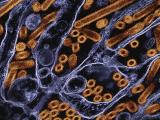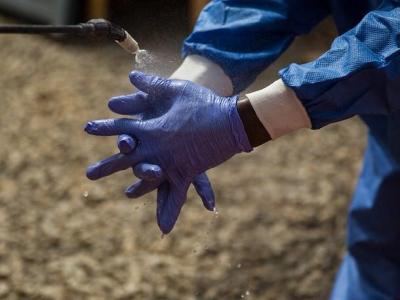Jan 6, 2012
Avian flu strikes backyard farm in Bhutan
Officials in Bhutan have culled 395 chickens and destroyed 447 eggs after an avian flu outbreak in Tsimasham in Chukha district, according to a story today from Bhutan's Kuensel Online news site. On Dec 30 and 31, 87 birds died on a backyard farm, and authorities culled birds on that and nearby farms Jan 4 and 5 after Bhutan's national center for animal health confirmed avian flu. The story, which said local officials were awaiting official confirmation from the World Organization for Animal Health (OIE), did not specify the strain of avian flu. Bhutan's last H5N1 avian flu outbreak was in the same district in March 2010, according to OIE data.
In related news, Hong Kong has confirmed that the avian flu strain that killed two black-headed gulls Dec 30 and Jan 2 was H5N1. Earlier this week, Hong Kong's Agriculture, Fisheries and Conservation Department reported that preliminary tests revealed an H5 virus but did not specify the exact subtype. Today the government confirmed H5N1 in the wild birds, found in Tuen Mun and Lantau.
Jan 6 Hong Kong government press release
Report details 3 probable cases of cutaneous anthrax in Serbia
Last June three Serbian farm workers likely contracted cutaneous anthrax, according to a report in yesterday's Eurosurveillance. The workers had contact with a dead heifer that was confirmed infected with Bacillus anthracis, which causes anthrax. The three men's illnesses were classified as probable anthrax cases on the basis of epidemiologic and clinical data; no diagnostic lab work was done. They developed painless, pruritic papulae on their hands within 1 to 2 days of touching the dead heifer, which is within the incubation period for anthrax. The papulae enlarged and formed 2-cm edematous ulcers with typical black central crusts. The men were treated with antibiotics for 15 days at home and recovered fully, according to the report. The authors say B anthracis spores may have been on grass and hay fed to cattle from pastures that had high groundwater levels after heavy rains.
Jan 5 Eurosurveill report
E coli in North Carolina outbreak may have come from livestock at fair
People who contracted Shiga toxin–producing Escherichia coli (STEC) in North Carolina last October were likely exposed to the disease by farm animals at the state fair, according to a wrap-up report today by health officials from North Carolina and the US Centers for Disease Control and Prevention (CDC). The team, which published its results in the CDC's Morbidity and Mortality Weekly Report (MMWR), matched 25 cases (median age, 25) with controls. Eight of the patients required hospitalization, and four developed hemolytic uremic syndrome, a serious kidney complication. The only exposure associated with the illness was visiting livestock houses at the fair (matched odds ratio: 5.6; 95% confidence interval, 1.6-19.2). The authors said a task force is looking at enhancing disease-prevention measures at the fair.
Jan 6 MMWR report
US State Department unveils Bureau of Counterterrorism
The US State Department this week announced it had established a Bureau of Counterterrorism, a move promised by Secretary of State Hillary Rodham Clinton in September. The bureau replaces the department's Office of the Coordinator for Counterterrorism, according to a State Department fact sheet. This development fulfills one of the recommendations of the Quadrennial Diplomacy and Development Review conducted in December 2010. The fact sheet did not specify whether the move means more staffing or a larger budget. However, in a briefing to announce the new bureau, Coordinator for Counterterrorism Daniel Benjamin said, "The establishment of the bureau in many ways is a confirmation or ratification of the things that we have been doing increasingly in recent years. So the fundamental tasks remain the same, but what we have now is an infrastructure to continue doing them more effectively and building on those successes in the future."
Jan 4 State Department fact sheet
Jan 4 State Department briefing transcript

















